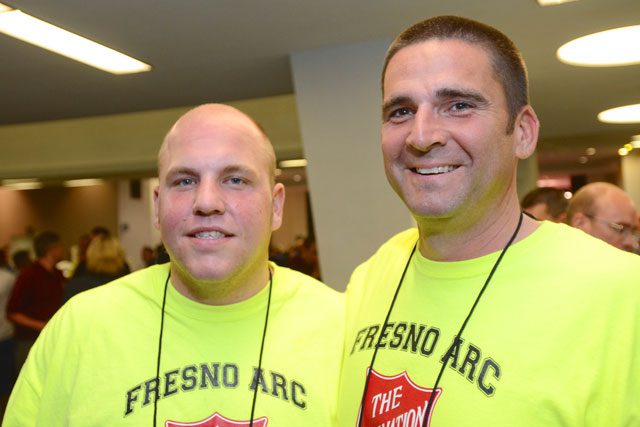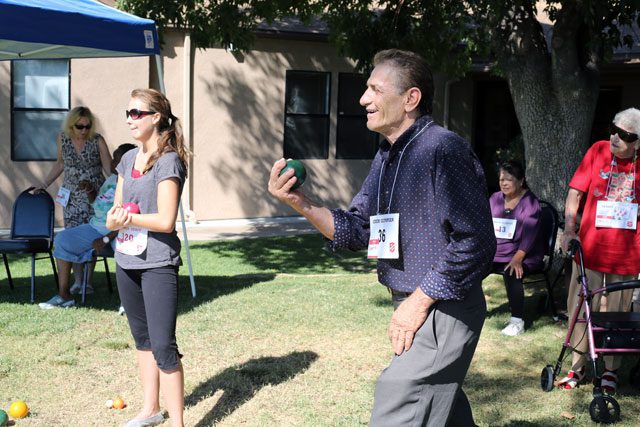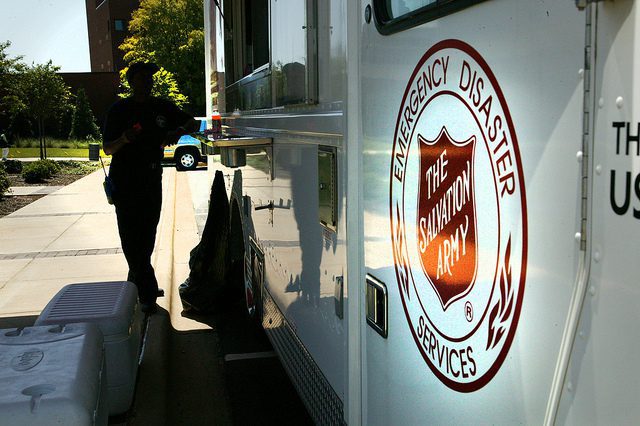 The Western Territory annually admits more than 7,500 men and women into its 24 Adult Rehabilitation Centers (ARCs), a cost-free and biblically-based six-month program to overcome addiction.
The Western Territory annually admits more than 7,500 men and women into its 24 Adult Rehabilitation Centers (ARCs), a cost-free and biblically-based six-month program to overcome addiction.
Roughly 2,500 (33 percent) of these beneficiaries graduate, yet the majority are not found worshipping in one of the territory’s 258 corps and four outposts—the center of Salvation Army worship, growth and social care within a community. Historically, the Army has not effectively transitioned ARC alumni to corps membership, and Territorial Commander Commissioner James Knaggs devised a plan to change this—the Harvest Initiative.
“What our research has shown is when a graduate from the ARC connected to a caring community, has a job and has accommodation, their success rate for staying sober is 86 percent,” said Derek Linsell, Apricot Consulting CEO, who consults with the territory on implementing the initiative.
It’s a vision first outlined by William Booth in “In Darkest England and the Way Out” when he said: “Go for souls and go for the worst.”
“The ARC can be compared to a hospital, a triage, working with highly-dysfunctional human beings whose lives are a mess—family relationships are confused, 75 percent are coming from prison, and many are homeless,” Linsell said. “But no one wants to live in a hospital all their lives; they want to live in a home. In The Salvation Army structure, the corps is the home.”
Harvest Initiative work is underway in the territory, with intentional plans in place from Seattle to Denver, Phoenix, Honolulu, along with Riverside, Anaheim, Pasadena, and San Diego, Calif.
“Time and again I hear from ARC graduates who remain linked to a corps that the key was that ‘someone cared for me, loved me,’” he said. “That’s the role of the corps, to build authentic relationships.”
Corps are using Sunday school, Bible study, music, sports and service outreach as opportunities to build the connection between people, along with intentional outreach to engage and welcome families of ARC beneficiaries and graduates. Linsell said the next step is to get the housing and employment elements in place. He is currently looking at a model that would find soldiers or advisory board members to rent houses for transitional living.
“We want to challenge soldiers to do this as part of their Salvationism,” he said. “The goal is by the end of 2014 to link every ARC to a corps in the territory, and ensure each is being intentional about the relationship.”
A timeline of the West’s Harvest Initiative
2011
Spring
- “ARC 101” class trials begin in Southern California to inform officers and soldiers on the ARC work.
Fall
- First caucus meets to discuss bridging ARC beneficiaries to the corps.
- ARC software undergoes upgrade to better connect with graduate and non-completers of the program.
- College for Officer Training at Crestmont (CFOT) launches “Introduction to Addiction and Recovery” course and opens ARC fieldwork placements for cadets.
- Pilot programs are established in Pasadena and Anaheim, Calif., and in Honolulu, Hawaii.
2012
November
- Second caucus meets; establishes concentration on education.
- Additional programs are established in Seattle, Portland, and San Diego, Calif.
2013
March
July
December
- Transitional living centers for ARC alumni are opened by the Pasadena Tabernacle Corps and Anaheim Praiseworks.
2014
April
- Addiction education workshops launch for officers, soldiers, families of beneficiaries and youth.
- Additional programs are established in San Francisco, Oakland, Calif., and Phoenix, Ariz.
May
July
October














